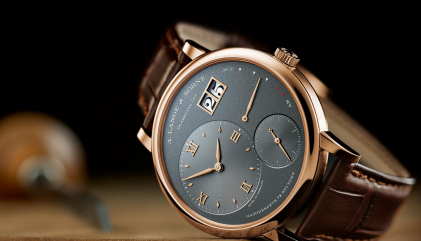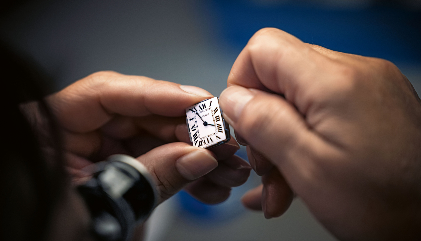While often described as the greatest Formula 1 decade ever, the ’70s, of course, were also a terrible time for accidents. People were hypnotised not by the stats, but by the stories, mainly because drivers were prepared to take a risk. Anyone who ventured onto the racetrack wasn’t just an athlete, but a modern gladiator whom the masses showered with acclaim. The Tissot Heritage 1973 takes us back to F1’s historical high-water mark. This timepiece embodies an attractive combination of retro and racing elements. Historical inspirations are evident in the oval shape of the case, the contrastingly coloured subdials and the mushroom-shaped push-pieces. Connections to the world of auto racing are obvious in the stopwatch function, the perforated calfskin strap and the tachymeter scale. The latter component is an analog aid to help drivers calculate the average speed of their vehicles. The wearer starts the chronograph when their car passes a mile marker and stops it again after having driven either one mile or one kilometre. The central chronograph hand now shows the car’s speed (in miles or kilometres per hour) on the scale along the dial’s periphery.
This additional function was already present at the 1973 debut of the Tissot Navigator, which inspired our contemporary model. The ancestral watch also had subdials in different colours, but there were only two of them because the Navigator counted elapsed minutes from the centre of its dial. This is the origin of the eye-catching orange arrowhead, which Tissot has now transferred to the central elapsed-seconds hand of the new watch.
Sportier Than Ever
The newcomer is much more dynamic than its historical role model. The watch’s dial, with its symmetrical tricompax arrangement featuring three subdials, is just as visually appealing as its sporty combination of matte black and silver-plated surfaces and orange elapsed-time hands.
The new case size of 43 mm by 46.5 mm corresponds to the spirit of our times, but it doesn’t necessarily fit well on slimmer wrists. Tidy finishing embellishes the surfaces of the impressive steel case. The sunburst on the satin-finished face, polished facets on the strap lugs and a slim polished strip at the lower edge of the middle part of the case are especially praiseworthy. The case thus makes an all-around high-quality impression, which is only slightly clouded by the sharp-edged undersides of the strap lugs. Their sharpness is not perceptible when the watch is worn, but it’s clearly noticeable when you touch the watch with your fingertip.
As is almost always the situation with Tissot, the back of the case is pressed on rather than screwed into place. This is a simple solution for the watch’s construction and it doesn’t adversely affect the case’s watertightness to a depth of 100 meters. The viewing window in the back is made of mineral crystal, so it could theoretically suffer scratches if the back of the watch were not protected by the soft and nonabrasive skin of the wearer’s wrist.
A Solidly Built Movement
ETA’s automatic Caliber Valjoux 7753 is hard at work behind the glass back. As a variation of Caliber 7750, it naturally supports subdials at 3, 6 and 9 o’clock. Unfortunately, and unlike the 7750, this movement provides no rapid-reset function for the date display via the crown. Instead, the wearer must press a recessed button on the left side of the case to reset the date. This requires a correction stylus or a repurposed tool such as a ballpoint pen or toothpick.
On the other hand, the operation of the crown and push-pieces leaves nothing to be desired. Furthermore, the movement is attractively decorated. Unfortunately, our test watch gained more than 10 seconds per day, as proven both by the timing machine and the wearing test. Moreover, the small elapsed-minutes hand is not 100 percent vertical in its resting position, but leans a tiny bit toward the left. Fans of retro and sports watches will need to accept this imperfection if they opt for the Heritage 1973. But perhaps they’ll interpret this trivial shortcoming as a beauty mark that reminds them of daring exploits in the glory days of auto racing, when success depended less on technology and engineering and far more on a driver’s passion and charisma.

















